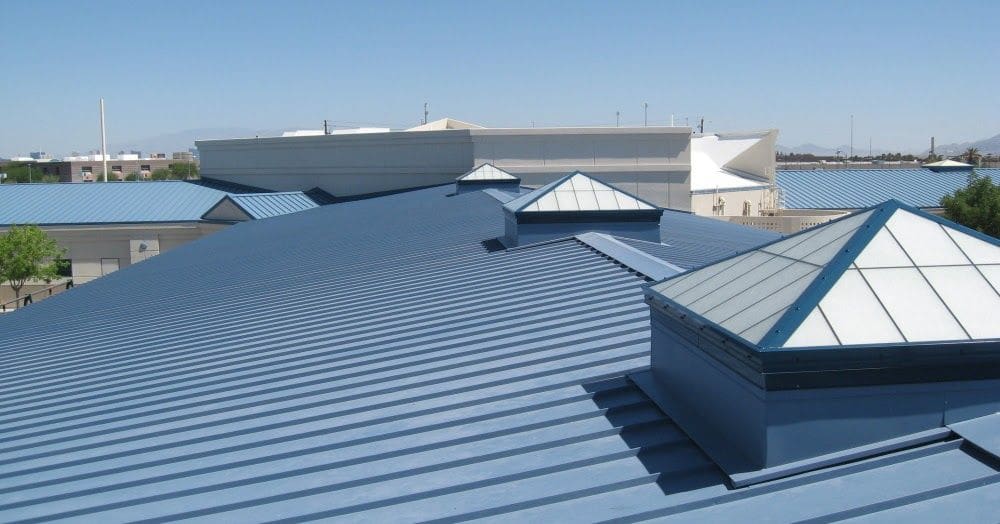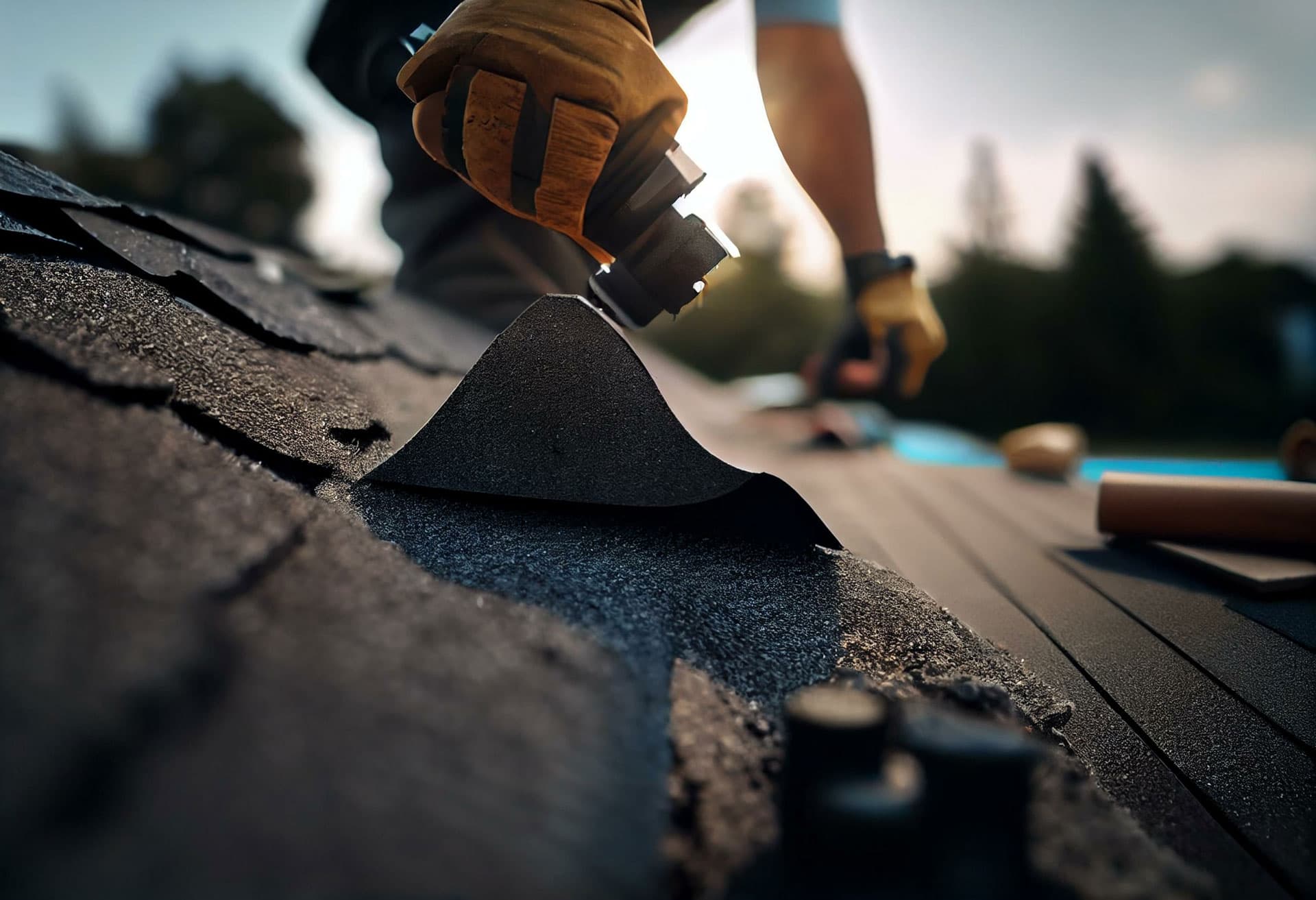The roof of your home not only acts as the primary barrier against the elements but also plays a critical role in maintaining the structural integrity of your property. Understanding the importance of roof protection, therefore, is not just about preserving the aesthetic appeal of your home, but also about ensuring the safety and security of your family and cherished possessions. The roof is often the first line of defense against inclement weather, including powerful storms that can cause significant damage. Ensuring that it is in optimal condition to withstand these natural forces is a crucial aspect of home maintenance.
Storms are notoriously unpredictable and can result in varying degrees of damage, depending on their intensity and duration. High-speed winds, heavy rain, hail, and falling debris are some of the potential dangers that can compromise the integrity of your roof. Minor damages can include broken or missing shingles and minor leaks, while more severe storm impacts can lead to structural damage or even roof collapse. Each storm leaves behind a trail of destruction that can be costly to repair, especially if the damage has been left untreated for a prolonged period. Therefore, it is of utmost importance to take proactive measures to protect your roof from these potential damages.
Types of Roof Damages
In the first section of this article, we emphasized the importance of roof protection from future storms and the potential damage they can cause. To further understand the need for these protective measures, let’s delve deeper into the types of roof damage that you may encounter.
Wind Damage
Firstly, wind damage is a common threat in stormy weather conditions. High-speed winds can cause shingles to lift, crack, or even tear off entirely, leaving your roof susceptible to leaks and further structural harm. Over time, these damages can increase the risk of interior damage to your home as well.
Hail Damage
Secondly, hail damage is another significant concern for homeowners. Hailstorms can strike without warning and have the potential to cause serious damage to your roof. The impact of hailstones can create dents and cracks on the roof’s surface, compromising its integrity and longevity. In extreme cases, hail can even puncture the roof, leading to immediate and extensive water damage.
Debris Damage
In addition to wind and hail, debris damage is also a serious issue. During a storm, loose branches, leaves, and other debris can be thrown onto your roof, potentially causing damage. While small debris may simply clog gutters and downspouts, larger debris can cause structural damage to the roof itself, including broken tiles and punctures that can lead to leaks.
Water Damage
Lastly, water damage is one of the most pervasive and detrimental types of roof damage. When a roof is damaged or poorly maintained, water can seep through the cracks, causing mold, mildew, and structural decay. This not only affects the roof but can also lead to significant damage within the home, including to the walls, ceilings, and insulation.
In conclusion, understanding these types of roof damage—wind, hail, debris, and water damage—is key to recognizing the importance of protecting your roof from future storm damage. Each of these damage types poses a serious threat to the longevity and effectiveness of your roof, highlighting the need for proactive roof maintenance and protection measures.
Precautionary Measures for Roof Protection
Regular Roof Inspections
In the section titled ‘Precautionary Measures for Roof Protection‘, we delve into various strategies to safeguard your roof against future storm damage. Firstly, regular roof inspections are crucial. By scheduling routine inspections, homeowners can spot potential problems early, before they escalate into more serious issues. This includes identifying wind damage that may have resulted in the lifting or tearing of shingles, or hail damage that can cause dents, cracks, and even punctures in the roof.
The Importance of Maintaining Clean Gutters
Secondly, the importance of maintaining clean gutters cannot be overstated. Gutters clogged with debris can cause water to overflow onto the roof, potentially leading to water damage. This is particularly harmful as it can result in mold growth and structural decay if water seeps through cracks.
Pruning Overhanging Tree Branches
Thirdly, homeowners should consider pruning overhanging tree branches. This is a preventative measure against debris damage, which can occur when loose branches and other materials hit the roof during a storm, potentially causing structural damage. Fourthly, installing wind-resistant roofing materials can go a long way in protecting against wind damage. These materials are designed to withstand strong winds and can help prevent the lifting or tearing of shingles.
Securing Loose Shingles and Tiles
Lastly, securing loose shingles and tiles can prevent them from being ripped off during a storm, thus reducing the risk of both wind and water damage. By securing these, homeowners can ensure that their roofs remain intact and capable of withstanding future storms.
Importance of Professional Roof Inspections
Following the vital precautionary measures outlined in the previous section, we delve deeper into the importance of professional roof inspections. These inspections are not just about ticking off a box on your home maintenance checklist; they are a crucial line of defense against potential storm damage.
Expertise and Experience
The first compelling reason to opt for professional inspections lies in the expertise and experience that certified inspectors bring to the table. Roofing systems are complex structures that require a trained eye to spot subtle signs of damage or potential weaknesses. Amateur inspections, no matter how thorough, are likely to miss critical issues that can turn into significant problems when a storm hits. Professionals, on the other hand, have the knowledge and experience to identify these problem areas and provide effective solutions to reinforce your roof against future storm damage.
Detailed Inspection Reports
Next, professional roof inspections also result in detailed inspection reports. These reports are comprehensive documents that provide a clear picture of your roof’s current condition. They cover every aspect of your roof, from the shingles and flashing to the underlayment and structural support. The report also includes potential issues and recommended repairs or replacements. With such a detailed guide at your disposal, you can make informed decisions about the necessary actions to protect your roof from future storms.
Identify Potential Threats that Could Exacerbate Storm Damage
Lastly, professional inspections are invaluable in identifying potential threats that could exacerbate storm damage. These threats may include weak roof components, inadequate drainage systems, and overhanging tree limbs. By identifying and addressing these risks in advance, you can significantly reduce the likelihood of storm-related roof damage.
In conclusion, while self-maintenance strategies are beneficial, nothing beats the comprehensive protection offered by professional roof inspections. By leveraging their expertise, detailed reporting, and threat identification capabilities, you can fortify your roof against the worst that Mother Nature can throw at it.
Roofing Materials for Storm Protection
Metal Roofing
Beyond professional inspections, selecting the right roofing materials can significantly enhance your home’s resistance to storm damage. Metal roofing, for instance, is renowned for its durability and longevity. Not only is it resistant to rot and insects, but it can also withstand harsh weather conditions, including heavy snow, hail, and high winds. Its interlocking panels provide an additional layer of protection against leaks, making it an excellent choice for storm-prone areas.
Slate Roofing
Slate roofing is another robust option to consider. While it comes with a higher upfront cost compared to other materials, slate’s natural durability and resistance to weather elements make it a worthwhile investment. Slate tiles can last for hundreds of years, effectively withstanding wind, rain, and hail. They add an element of elegance and charm to your home while offering superior protection against storms.
Rubber Roofing
Rubber roofing, often used for flat and low-slope roofs, also offers substantial storm protection. Rubber is resistant to water, providing an efficient barrier against leaks. It can also withstand extreme weather conditions, including high winds and hail, enhancing its appeal for storm-prone areas.
Reinforced Asphalt Shingles
Lastly, reinforced asphalt shingles offer a cost-effective solution without compromising on storm protection. These shingles are designed with a reinforced fiberglass base, providing enhanced durability and resistance against wind and rain. They’re also available in various styles and colors, allowing you to customize your roof’s appearance while ensuring it’s equipped to handle potential storm damage.
In conclusion, choosing the right roofing material is a crucial step in protecting your roof from future storm damage. By considering factors such as durability, resistance to weather conditions, and cost, you can select a roofing material that not only complements your home’s aesthetic but also provides long-lasting protection against storms.
Insurance and Roof Protection
Moving from the selection of robust roofing materials, it’s equally important to understand your homeowner’s insurance coverage and how it plays a part in roof protection. Homeowners insurance is a crucial aspect of home ownership, as it can significantly offset the cost of repairs or replacements caused by storm damage.
Understand Insurance Policies
However, not all insurance policies are created equal, and the extent of coverage often depends on the specific terms of your policy. It’s therefore essential to thoroughly understand your policy, including what types of storm damage are covered. Most standard policies cover damage caused by unpreventable events like hail, wind, and lightning, but it’s important to note that preventable damage or damage due to lack of maintenance might not be covered.
Knowing the Process of Claiming Insurance
In the unfortunate event of a storm causing damage to your roof, knowing the process of claiming insurance can save you a lot of stress and potentially money. It typically involves an assessment of the damage by an adjuster from your insurance company. The adjuster will evaluate the extent of the damage and determine the amount of compensation based on your policy’s coverage. To facilitate this process, it’s beneficial to document the damage as soon as it’s safe to do so – take photographs or videos, and make a list of all damaged items. This evidence can be invaluable when making your claim. Additionally, obtaining estimates from professional roofers can also help to ensure that you receive a fair assessment and adequate compensation.
Insurance and roof protection go hand in hand. While robust roofing materials provide the first line of defense against storm damage, a comprehensive homeowners insurance policy provides a safety net for unforeseen circumstances. By understanding what your insurance covers and the claiming process, you can secure your home and finances against future storm damage.
Conclusion
In conclusion, sheltering your home from the potential destruction that storms can bring is paramount. We’ve explored the importance and various methods of safeguarding your home’s roof from storm damage. These protective measures range from regular maintenance and inspections to the proper installation of roofing materials. By keeping your roof in top shape, not only do you enhance the longevity of your property, but you also save on costly repairs and replacements.
Regular maintenance and inspections are instrumental in protecting your roof from storm damage. These preventive measures allow you to identify and address potential issues before they escalate into more significant problems. By doing so, you can avoid the inconvenience and cost associated with extensive roof damage. Remember, a robust, well-maintained roof stands a better chance against harsh weather conditions.
Revisiting the importance of understanding your homeowner’s insurance policy, it stands as a critical financial safety net against future storm damage. Knowing what your policy covers and how to navigate the claims process effectively can save you a lot of stress and financial strain following a storm. With comprehensive coverage, you can rest easy knowing that you are financially protected against storm damage.
In light of all these, it is clear that taking proactive steps toward protecting your roof from future storm damage is a worthy investment. It not only preserves the aesthetic appeal of your home but also its structural integrity and value. So, stay ahead of the storm and protect your home by adhering to regular maintenance and inspections, along with a solid understanding of your homeowner’s insurance policy. Ensure the protection of your roof with Stanton RECC. With their expertise, you’ll receive thorough inspections and efficient solutions, safeguarding your home from potential damage and ensuring long-lasting durability against the elements.
Name, Address, and Phone
Stanton RECC
7622 Colgate Ave, Westminster, California, 92683, US
714-451-4948
Social Media’s







